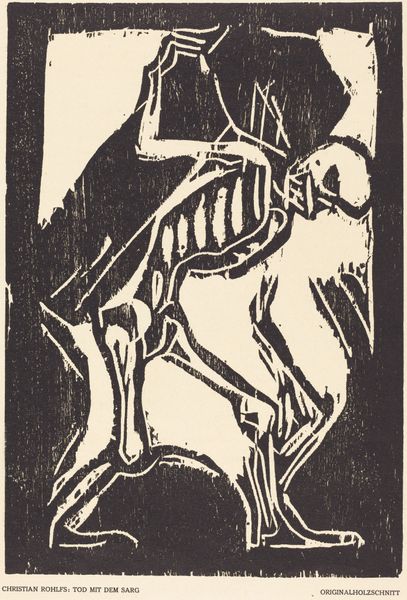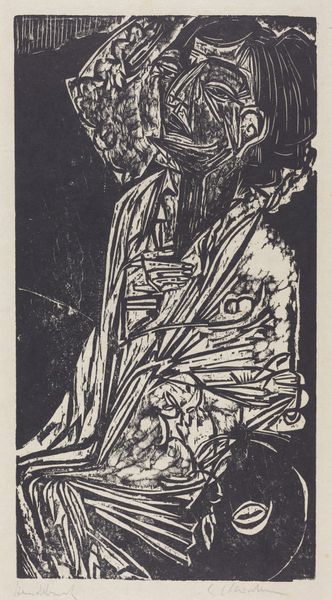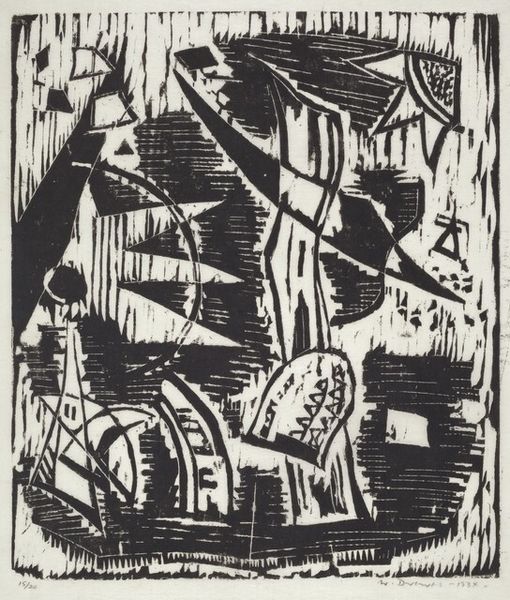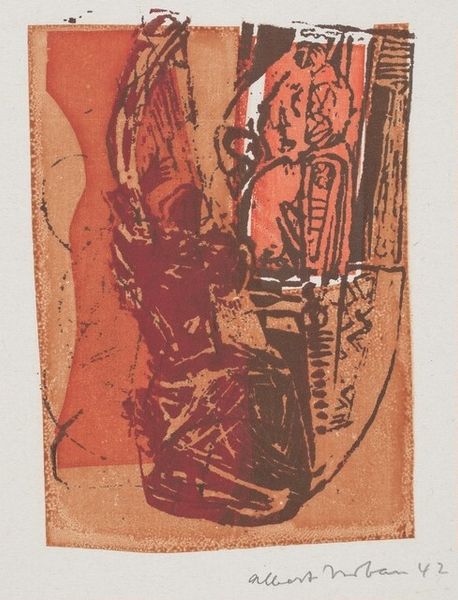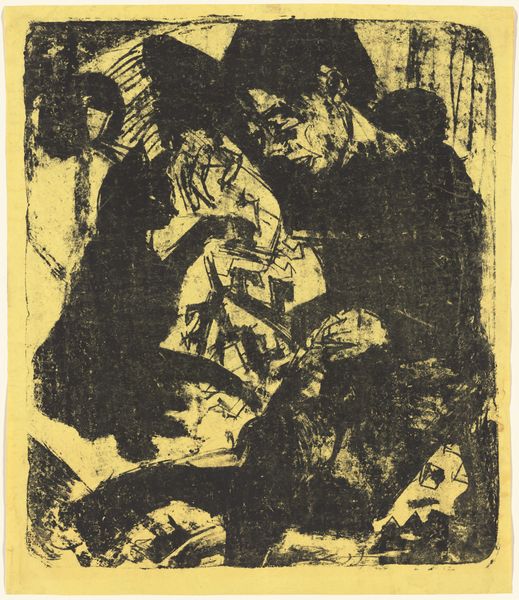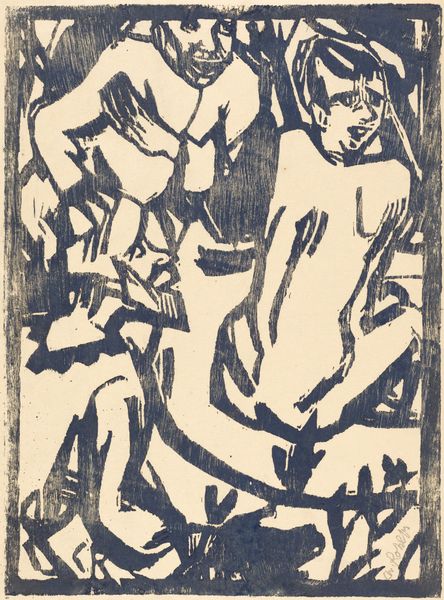
print, linocut
#
narrative-art
#
ink painting
#
linocut
# print
#
linocut
#
german-expressionism
#
figuration
#
linocut print
#
organic pattern
#
expressionism
Dimensions: sheet: 68.7 × 51.4 cm (27 1/16 × 20 1/4 in.)
Copyright: National Gallery of Art: CC0 1.0
Curator: We're looking at "Flood," a linocut by Christian Rohlfs, created around 1918. Editor: What strikes me immediately is the starkness, the urgent, almost brutal simplicity of the composition. The monochrome palette, punctuated by this brick-red color, heightens the feeling of devastation. Curator: Absolutely. Rohlfs, working within the Expressionist idiom, often leveraged bold contrasts to convey heightened emotional states. Consider how the sharp, angular lines work against the figures. The texture achieved through the linocut technique amplifies this sense of rawness. It avoids detail in favor of expressing feeling through the sheer graphic weight of the marks. Editor: And the figures themselves—isolated, adrift, clinging to each other amidst the chaos. The imagery certainly invokes a sense of primal struggle, perhaps reflecting on broader themes of societal upheaval given the date, not long after World War One had begun. We have that archetypal symbol, the deluge, reminding us of universal stories of cleansing and rebirth through destruction, but here, void of any promise of renewal. Curator: Precisely. The visual rhythm of the piece relies on a very structured tension between these areas of high contrast, with bold blacks forming strong verticals which draw the eye upward but lead nowhere. Rohlfs employs a restricted palette but the application is quite varied, the rough, chiseled texture suggesting an environment which is tactile and hostile. Editor: Looking at this from a purely symbolic perspective, one can see references to old creation myths; for example the prone bodies recall to me the figures in Michelangelo’s Last Judgement; they become an allegory for humanity itself in the face of overwhelming forces. It’s not just the formal composition that communicates the turmoil, but how these forms evoke a timeless feeling of human struggle. Curator: It's a compelling piece, wouldn't you agree? One where formal choices align powerfully with profound thematic content. Editor: Without a doubt. It's an example of how raw emotion and carefully considered graphic choices can come together to produce a memorable and profoundly moving work of art.
Comments
No comments
Be the first to comment and join the conversation on the ultimate creative platform.

